Options for a Small, Unique or Difficult Spaces
I would venture to say that 80% to 90% of the population probably does not have their ideal space. Case in point: I was in a friend’s home a few weeks ago, which is well-decorated and looks amazing and we spent a good 15 minutes talking about how many things she’d like to change! I was surprised because anyone would say her home is beautiful. However, even then, it wasn’t ideal for her particular situation. She loves her open concept home, however as we walked through the house, she showed me a few rooms that give her difficulty, so I began to wonder how many people live in spaces that aren’t ideal for them and their lifestyles.

Using contrast, color and texture in a smaller living room creates visual interest and invites people to spend time there. (MadridHouse)
Someone mentioned to me recently that they’d heard I was an advocate for small spaces. It’s not that I advocate small space living. I don’t think we should all be living in 1,000 square feet and I’m not here to convince anyone that a small space is better, because people’s tastes will be their tastes. Personally, I enjoy ALL spaces! However, I do know from first-hand experience that many of us work and live daily in small and difficult spaces, so I strive to highlight that they have just as many luxurious options and solutions as larger rooms.
This room adjacent to a kitchen I visited recently was cleverly re-imagined as a workspace, instead of using it as a laundry room or as a huge pantry, and although it is small, it has plenty of hidden storage for media and office equipment as well as excellent light and ambiance.
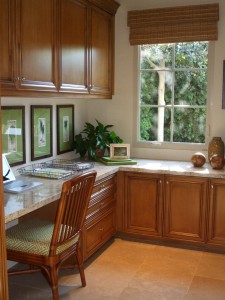
Clever use of a small, unique space adjacent to the kitchen, re-imagined into the hub of the house (NDC)
Creating workspace at home is one of the top functional requests I hear from potential clients. The second client request is ‘…but I want it to be beautiful, too’. In recent years in particular, more people are shifting to alternative work schedules and working at home and thus the need is born for carving out usable, beautiful space within our living areas.
When working with clients with small spaces and for whom renovation isn’t an option, incorporating line and rhythmic pattern works well because your eye perceives it differently than the space itself. Creating movement in a space helps us perceive more visual volume in it. Conversely, using line and rhythm also works well for rooms with a lot of vertical space, such as the one below. This isn’t a particularly large space, though it has a lot of overhead volume to address.
Using elements that are less restrictive, such as armless chairs or backless stools, also help give us free flowing movement around difficult and small spaces.
Small, unique and difficult spaces have every ounce of possibility as larger spaces. Thinking about the elements the space has to offer, as well as the functions we want the space to serve, are good starting points to creating a beautiful, comfortable smaller space.
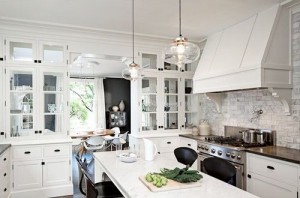
Another option for a small kitchen is to use upper cabinetry with transparent doors or simple open shelves (Ellen O’Neil)
What do you think…do smaller spaces work better for you? What solutions do you incorporate in spaces that give you difficulty or that feel small?

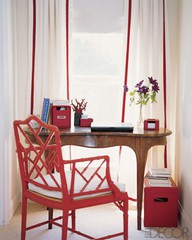
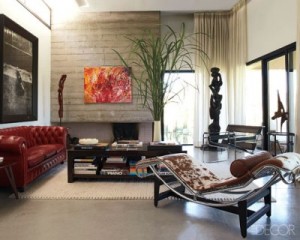
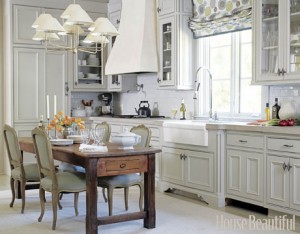
0 comment